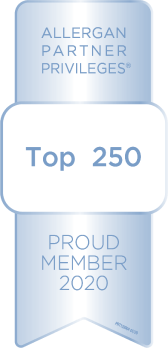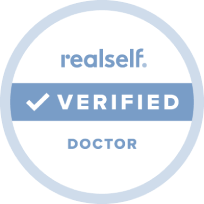One side of a person’s face is never perfectly symmetric with the other, the nose included. Nearly everyone has a deviated septum—but it’s only when the septum (the wall between the nostrils that separates the two nasal passages) is so crooked that it causes valid breathing problems that Dr. Raval recommends surgery for a deviated septum. Called a Septoplasty, the submucous resection of the septum or septal reconstruction may be combined with other procedures to treat chronic sinusitis, inflammation, or bleeding, or to correct sleep apnea.
A deviated septum can limit the air intake through one nostril in particular, leaving the individual feeling like they can’t inhale completely. An individual with a deviated septum often finds that he/she can’t sleep on one side because their deviated septum compromises their breathing in that position. Participation in certain sports can be frustrating for the patient who can’t seem to get enough of that powerful stuff we call oxygen to their lungs. And a severely deviated septum can worsen snoring and sleep apnea.
Not all breathing problems are a result of a deviated septum, however.
In some cases—accidents and sometimes aging—the lateral (outside) wall of the nose, also known as the nasal valve, can collapse. If a patient gets benefit from wearing over-the-counter breathing strips that effectively “tent open” the nostrils, nasal valve surgery may be recommended; but breathing strips may not correct the severe breathing issues that can result from a deviated septum. Balloon Sinuplasty may be recommended; but breathing strips won’t correct the severe breathing issues that can result from a deviated septum.
In his pre-surgical consult with the patient, Dr. Raval examines the patient to determine if the nasal blockage is caused by a deviated septum, nasal valve collapse or both. He may also examine the patient with an endoscope if there is suspicion that the sinuses may contribute to the problem. In 20 – 30% of cases that a patient has a breathing problem, the sinuses are also involved, says Dr. Raval, an American Board Certified Ear-Nose-Throat Surgeon, who frequently performs sinus surgery.
To address the sinuses, frequently Dr. Raval performs a procedure called a balloon sinuplasty that is much less invasive than traditional endoscopic sinus surgery.
Nasal obstructions, breathing problems, and broken noses are all reasons to weigh nasal surgery. But when is the right time to see a specialist for your breathing problem?
“Often patients will tough out a breathing issue,” says Dr. Raval. “Yet treatment can dramatically improve a person’s quality of life, so sooner than later is recommended. Corrected breathing adds significantly to a person’s enjoyment of life. Breathing effectively and properly allows a person to be more active, work out and in some cases the benefit can extend to a partner because snoring can become a thing of the past.”
Surgery to correct a deviated septum requires the specialist to work through the nostrils, making an incision in the layer of soft tissue (nasal mucosa) to separate it from the underlying cartilage and bone. The doctor then straightens or trims the bent cartilage and replaces the musoca over the cartilage and bone. The entire surgery for a deviated septum takes only about an hour.
Performed as outpatient surgery under general anesthesia, the patient is able to return home later that same day. After surgery, the patient’s nostrils are kept open with nasal stents which are a dramatic improvement in comfort in comparison to the gauze packing of days past. The nasal stents are removed after a few days in Dr. Raval’s office. For the following week to 10 days, patients are advised not to blow their nose, simply dab at an inconvenient dripping.
Nasal sprays are prescribed in order to quickly reduce swelling. Downtime from surgery for a deviated septum means eliminating athletic activity for the first 10-14 days and avoiding swimming for several weeks until the healing process is completed. Because the swelling makes it difficult to clear one’s ears, flying is not recommended for the first 2 weeks post surgery either.
Surgery for a deviated septum, unlike purely cosmetic nose jobs, is covered by medical insurance.







